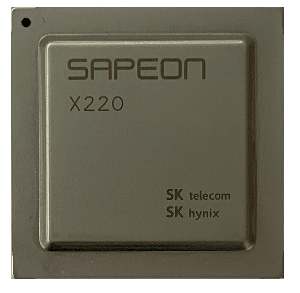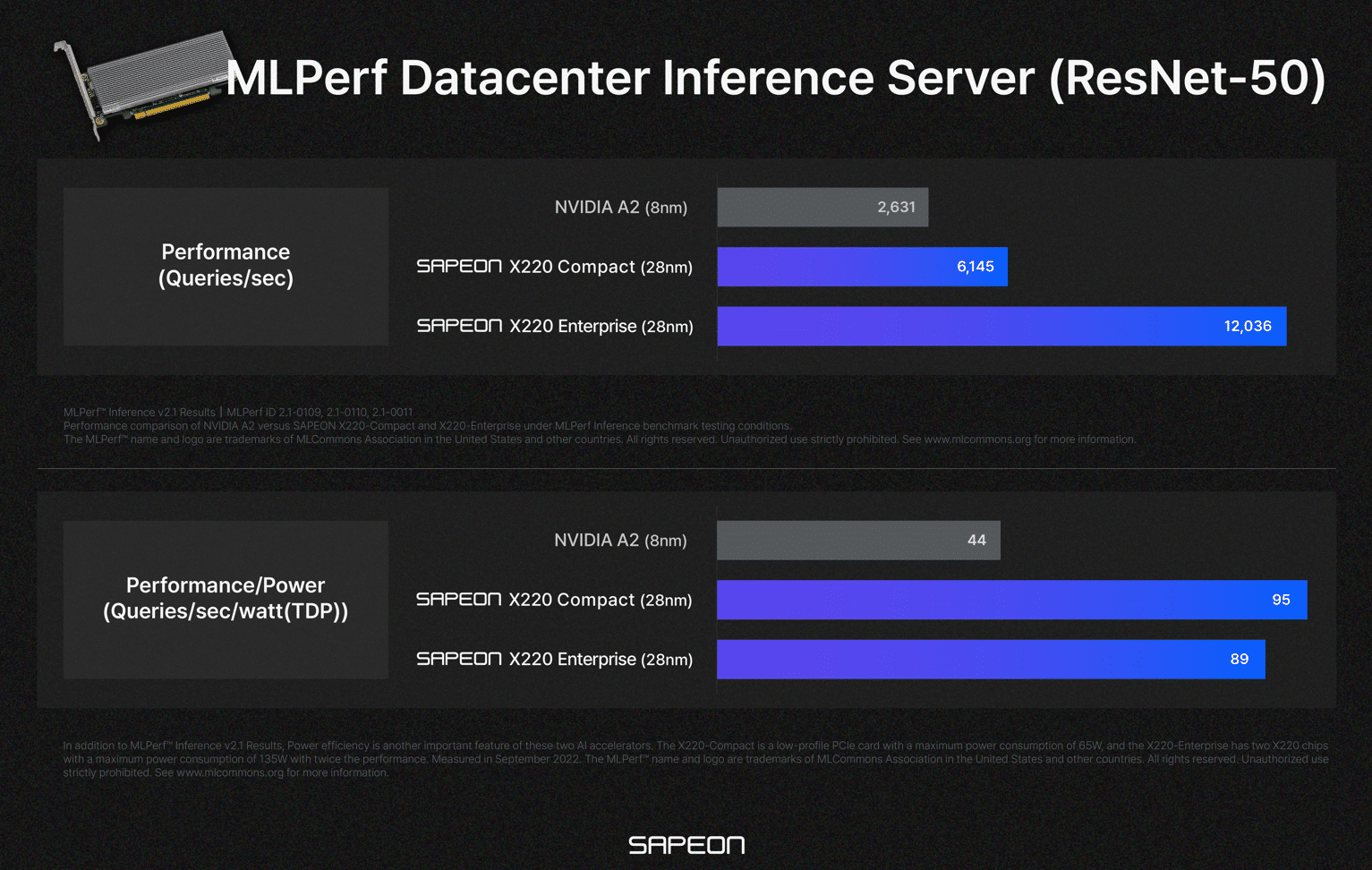SAPEON is poised to give NVIDIA a run for its money with a new AI chip is hitting the scene called the SAPEON X220. The use of AI to compute, enhance and analyze data is a very high-growth area, especially at the edge. The AI compute GPUs like the T4 and the A2 from NVIDIA are the defacto standards for edge inferencing. The X220 looks to disrupt the standard seeking to double the performance of the A2 NVIDIA GPUs and do it at a low cost.

The Sapeon AI compute chip is fabricated on the 28nm process. Despite using the older process, the chip is able to outperform the competition using newer processes, according to data from SAPEON. By comparison, the NVIDIA A2 uses the 8nm process.
X220 vs. A2 MLPerf Comparison

In the MLPerf data center test, the SAPEON X220 Compact scored 2.3 times faster than the NVIDIA A2, whereas the X220 Enterprise scored 4.6 times faster than the A2. This is an outstanding accomplishment. If the Sapeon AI compute chip is competitively priced and does double to quadruple the performance of the comparable NVIDIA GPUs, then it will definitely make waves in the space.
The performance power per watt is also outstanding. Both of the SAPEON GPUs are able to do double the queries per watt that the A2 is able to do.
Market Impact
While the company reported benchmarks seem miles ahead of the A2 GPU, hopefully, the X220 performs as well in the wild outside of the friendly testbed confines. The power savings per watt and the performance being quadruple the A2 is outstanding. It would be interesting to see how the T4 fares against the X200. While the T4 uses more power, it delivers much better results than the A2 in certain workloads.
SAPEON also has a bit of an uphill battle in terms of awareness and maturity. The South Korean company is making a wide variety of partnerships to try to break into the enterprise space, but they have many miles to go to even come close to NVIDIA in this regard.
Further, from the software side, NVIDIA has been investing for many years, making their cards easy to deploy in a wide variety of environments thanks to offerings like NVIDIA AI Enterprise and the LaunchPad demo environment.
Even so, the accelerator card market is full of newcomers and surely many of them will make their mark. We’re enthusiastic to see the SAPEON X220 come to market and hope to get hands-on with the cards to see what they’re made of.




 Amazon
Amazon